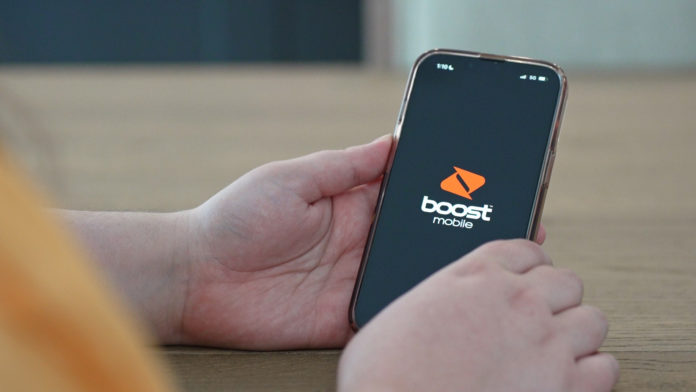The time over Christmas and New Year is typically a time for rest and recreation in Australia, and why not – there are enough public holidays to get a week or two off work at minimal cost, and we tend to use this time to see family, friends, spend time around the house, maybe take an actual holiday, and catch up on things we’ve been putting off forever.
For me, it’s often time to reflect on the 12-month commitments coming up. My car registration falls due in February, so I need to think about things like insurance, CTP and the like, and it also happens to be when my mobile plan expires, so it’s time to make sure I’m getting the best bang for the least buck.
This time last year (early January 2022) I was looking at my mobile spend, what I got for it, and how I was using my phone and decided to make a change. I had been with Vodafone previously, but was looking for better value for a few reasons:
- I wanted better coverage; Vodafone has become pretty good, but there’s plenty of places where I experienced dropouts or no data flow. I live with my phone, and if it doesn’t work, I can’t get my work done.
- I wanted better value; paying more than $80 a month seemed silly, when I wasn’t using that much data – much of the time (though not most) I am in WiFi coverage at home, our office or on a worksite somewhere, and so while I need good coverage and data speeds when I need them, I don’t need a lot of data all the time.
- I don’t want to be committed to a particular provider; while the days of lock-in contracts are mostly gone, the idea of signing a contract for many hundreds of dollars for a service which mightn’t ultimately be best value seems a bit daft.
I guess you can see where this thought process was going .. and curiously enough, you’re right. I went looking at prepaid providers, and in particular, those using the Telstra network.
There’s quite a few of these around – Aldi, Boost, Tangerine, Nu Mobile, Woolworths, and others. You can, of course, also get Prepaid from Telstra directly .. but it’s not usually great value.
Of those providers, one stands out amongst the others for a couple of reasons.
Boost Mobile – why?
Boost Mobile is unique amongst prepaid providers – especially those on Telstra – in that it offers access to the entire network of its carrier network. While Aldi, Woolworths and others use Telstra’s network, they use most of it, certainly not all. With Boost, whatever coverage you’d have as a direct Telstra customer, you have with Boost also and – since mid 2022 or so – that includes access to Telstra’s 5G network.
Boost ticked a lot of my boxes:
- Long renewals – I don’t want to be recharging monthly.
- Great value – $300 got me something like 260GB of data to use over 12 months.
- Unlimited calls and texts within Australia and a generous international allowance just in case.
Other Inclusions
While not so relevant for me – that $300 a year option was what I went with – the monthly options have data roll-over so anything you don’t use you can carry forward ongoing.
If you use a huge chunk of data, the monthly options might be more your speed – $50 gets you 70GB of data each 28 days, up to $70 for 130GB of data over 28 days.
The popular 28-day recharge plans all come with unlimited calls and text, as well as unlimited international calls and text to 20 regions (plus 100 minutes to an additional 35 countries). It’s rather generous.
International Roaming
If you’re actually travelling rather than just calling people overseas, Boost’s international roaming is quite reasonable; it’s not Vodafone’s Red Roaming (that gives you all the inclusions of your mobile overseas for $5 a day), but for $30 you can get 3GB of roaming data, 30 minutes of calls and 30 SMS for 7 days in some 40 countries, and for $40, you get 5GB instead, 14 day expiry, 60 mins of calls and 60 SMS.
It’s not a huge inclusion, but as a fairly seasoned international traveller, it’s probably more than I’d actually use (especially if you have access to WiFi at your accommodation for sharing photos or more bandwidth-intensive activities).
Where can you use it? Here:
Canada, China, Croatia, Czech Republic, Denmark, Fiji, France, Germany, Greece, Hong Kong, Hungary, India, Indonesia, Ireland, Israel, Italy, Japan, Malaysia, Netherlands, New Zealand, Norway, Philippines, Poland, Qatar, Samoa, Serbia, Singapore, Soloman Islands, South Korea, Spain, Sri Lanka, Sweden, Taiwan, Thailand, Tonga, Turkey, UK, USA, Vanuatu, and Vietnam.
With international borders re-opened and international tourism and business becoming more normal again, this is a factor many will want to consider.
There are reasons why Boost might not suit you, but it definitely suited me – and so much so that I recharged for another 12 months in January 2023 as well.
If you’re minded to switch, there’s a special offer going at the moment too:

If you sign up before 11.59pm on 03 January 2023, you get 140GB for $170 (a saving of $30) with a long 12-month expiry. For those who don’t use a huge amount of data, that’s around 11.5GB a month of data plus unlimited calls, SMS and such, for about $14.20 a month (if you spread it out).
It’s great value, and a great way to try the service out before committing to a bigger spend (e.g. the $300 plan I use).
And no, before you ask, this isn’t a paid advertorial or the like. I like Boost, and I recommend its service to just about everyone who asks (there are some use cases whether other providers do offer a better deal), and I’m doing the same here.




